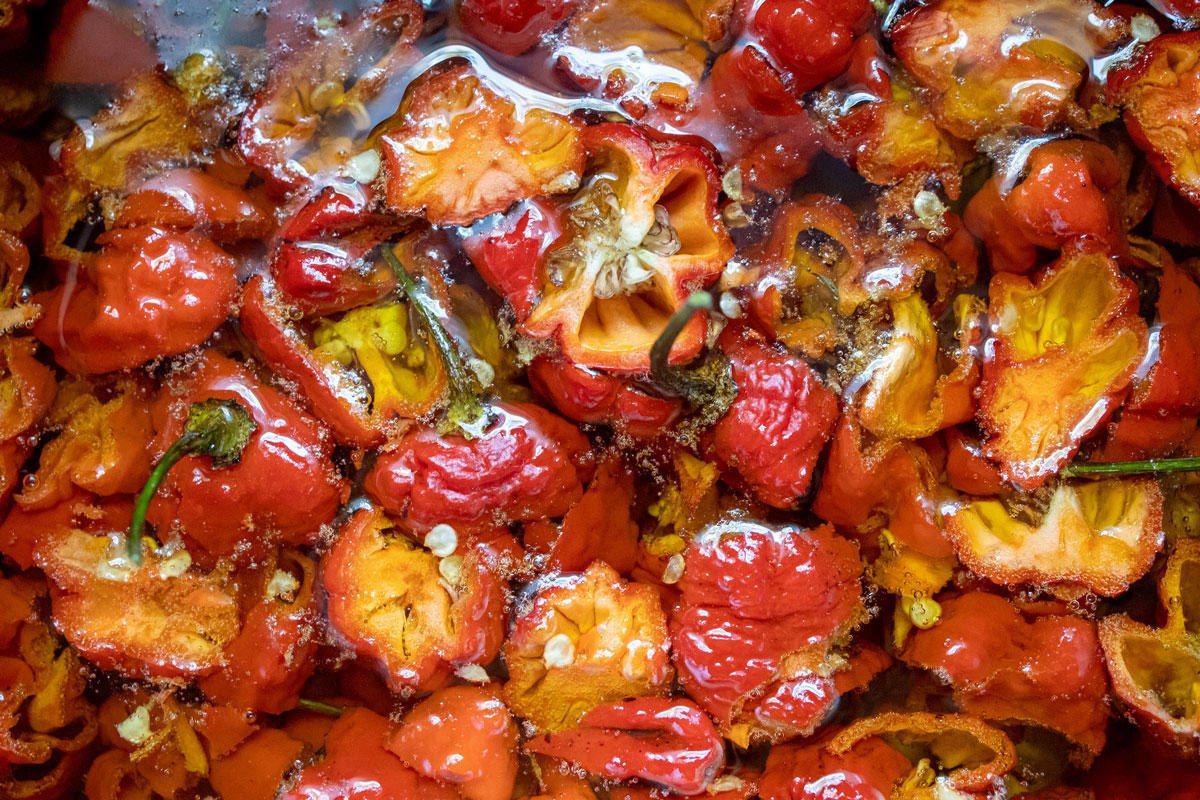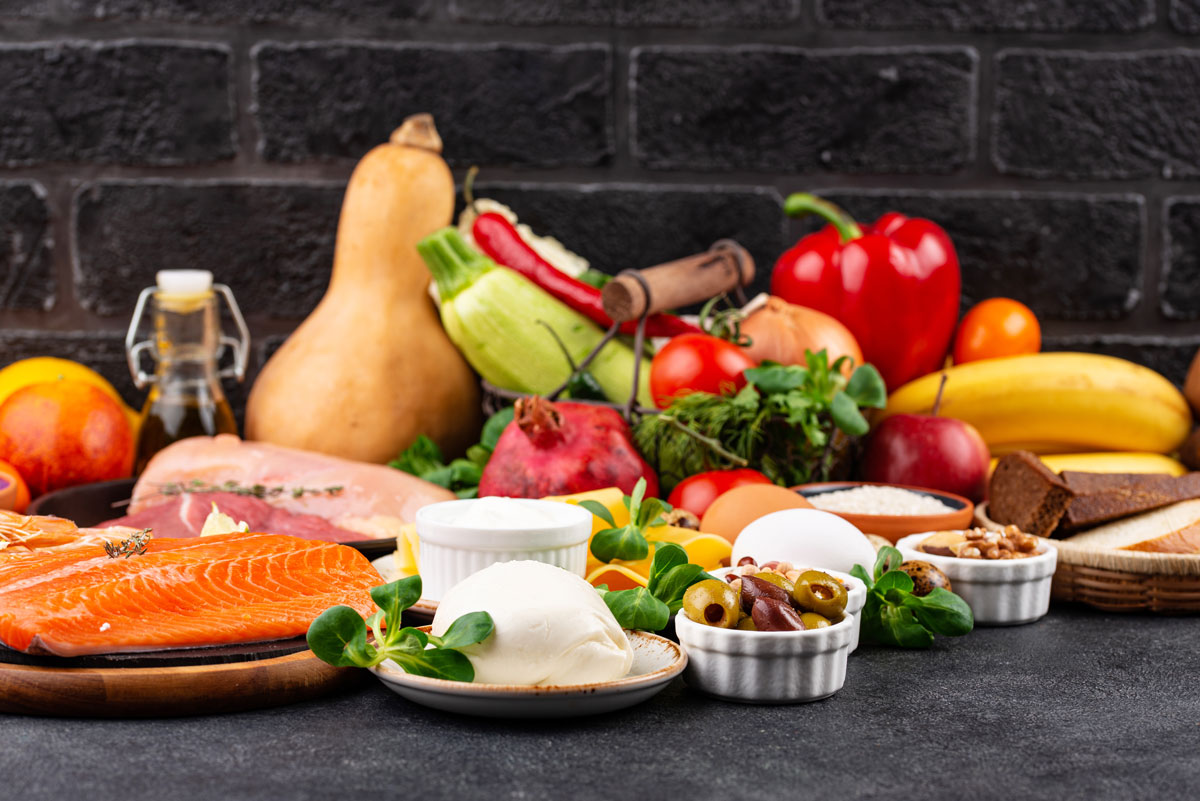This chili oil recipe has become one of the most popular on the blog, and for good reason. It is as much a foundational ingredient for many of our recipes as it is a delicious condiment. Also, learning how to make chili oil yourself means:
- Having a much more flavorful result
- Knowing exactly what goes into it
Over the years, we’ve received many questions and comments from readers on this recipe, so we’ve updated it with more detail and instructions, as well as options to tailor it to your exact liking!
INGREDIENTS:
Ok, let’s quickly talk about ingredients. Here’s an overview of what you need, and what’s optional in the recipe:
- Oil: Ideally a neutral flavored oil, such as vegetable, canola, peanut, soybean, or grapeseed oil. Traditional Chinese caiziyou is also a great option if you can find it (it’s available at The Mala Market). It’s related to canola oil, which is cultivated in a low-acid, more commercially viable seed and treated differently in many parts of the world (canola is actually a brand name, kind of like “bandaid”). Light olive oil can also work, but it has a lower smoke point and a tendency to harden in the refrigerator. These days, avocado oil is also becoming a popular healthy oil option, but you’re better off saving that for other applications, as it holds up well, but has a tendency to set in the refrigerator (albeit, not as intensely as olive oil will). The more aromatics you use, the more oil you can add. If using “the minimum” of aromatics, use 1½ cups. If you’re using almost all of the aromatics, you should net out at 3 cups. It is okay for this to be somewhat imprecise.
- Essential spices: At a minimum, you’ll need 4 aromatic spices: star anise, cinnamon stick (preferably cassia cinnamon), bay leaves, Sichuan peppercorns.
- Optional spices & aromatics: If you want a bit more flavor and complexity, you can also add three additional spices: black cardamom (草果; pinyin: cǎoguǒ, or tsao-ko), dried sand ginger, cloves. If you’d like to deviate from a pure spice flavor, you can also add garlic and/or shallots to the oil infusion.
- Chili flakes: You will need Sichuan chili flakes for best results. Avoid regular crushed red pepper flakes. We recommend the Sichuan Chili Flakes from The Mala Market, whether you don’t have access to a Chinese grocery or are looking for premium quality chilies!
- Salt: Necessary to bring out the flavor of all the spices and aromatics!
- Optional final add-ins: Whether or not you add anything further is totally up to personal preference. Add-ins include: toasted sesame seeds, Chinese black vinegar, sesame oil, soy sauce, and raw garlic (raw garlic should be added to smaller amounts of chili oil to be imminently consumed).
CHILI OIL RECIPE INSTRUCTIONS
The three variables to getting the perfect chili oil are:
- Oil temperature: Getting the right temperature when you infuse the oil with the aromatics, and when you pour it over the chili flakes. You want the oil to be hot enough to toast the spices and release flavor, but not so hot that the spices burn
- How long you infuse the oil
- Any add-ins used, and when they are added
We’re going to break it all down into 4 easy steps!
STEP 1: PREPARE AROMATICS
There are many differing opinions when it comes to the best aromatics for chili oil, as well as many variations. In the years since I first posted this recipe, I’ve experimented with more variations, and have outlined some additions you can use, as well as the bare minimum you’ll need to make a great chili oil.
At minimum, you’ll need these spices:
- 5 star anise
- 1 cinnamon stick (preferably cassia cinnamon; note that cassia cinnamon comes in larger rolls, so you really just need about a 3×1-inch piece)
- 2 bay leaves
- 3 tablespoons Sichuan peppercorns
- If you want more flavor, add these spices:
- 2 black cardamom pods
- 4 nuggets of sand ginger (about 1 tablespoon)
- 2 teaspoons cloves
- If you want to deviate from a pure chili flake flavor, you can add these additional aromatics:
- 3 crushed garlic cloves
- 1-2 shallots, halved
Gather all the aromatics you plan to use and have them at the ready.
STEP 2: PREPARE OIL
- Place oil and selected aromatics into a pot with at least two inches of clearance between the oil and the rim of the pot. If using minimum aromatics, 1 ½ cups of oil should do it. If using all the aromatics, you can add up to 3 cups of oil.
- Set it over medium heat to start, then progressively lower it to medium low or low heat as the oil comes to temperature. The oil should be at about 225-250° F / 110-120° C and causing small bubbles to slowly rise from the aromatics.
- If you notice the spices sizzling more vigorously than that or turning dark too quickly, reduce the heat to cool it down.
- If you are not achieving small bubbles, slowly increase the heat. For novice cooks, hovering around 200-225° F is the safest way to prevent burning. In this instance, we kept ours at 225°F.
- Infuse the aromatics this way for a minimum of 30 minutes, or up to 1 hour for best results. As you are heating the oil, here are some things to look out for:
- If just using hard spices, the bubbling of the oil should be very tiny but constant. They will cling to the spices and rise up. The oil should not be hot enough to show any additional visible movement.
- If you are using garlic and shallots, the oil will bubble slightly more vigorously due to the water content of the fresh ingredients. This is normal, but you should still ensure that the garlic and shallot are still browning very slowly.
- Once you see bubbles, the heat can hover between 200-225°F. If you want to infuse your oil for less time, it’s best to stay at the higher end of the temperature spectrum.
- If you are at the lowest heat setting and it’s still too hot, take the oil off the heat periodically to avoid burning.
- When the garlic and shallot get brown all over, remove them from the oil so they don’t burn. But don’t let them go to waste. They are delicious on toast, as my dad was quick to take advantage of!
STEP 3: POUR HOT OIL OVER CHILI FLAKES
- While the oil is infusing, prepare your chili flakes by placing them in a heatproof bowl.
- How much chili flake should I use?
- If you used 1½ cups of oil, ¾ cup of chili flakes is best. For 3 cups of oil, use 1¼ cups of chili flakes. You can experiment within this range (if you like more oil and fewer flakes, for instance). Just bear in mind the quantity of oil needed to ensure you get enough flavor and color.
- What kind of chili flakes should I use?
- We bought a few kinds of chili flakes from our local Asian market to show you some of the differences across brands. Let’s take a closer look.
- Firstly, do not be tempted to use Italian red pepper flakes. I included them in the photo above, so you could see just how different they look from the Chinese versions.
- You will not get a deep red chili oil, and the flavor just won’t be there. We also get questions about using coarse Korean gochugaru. You could use that in a pinch, but it will not be Chinese chili oil! Gochugaru is also often milder than Sichuan chili flakes.
- The best chili flakes to use are Sichuan chili flakes, but you can see in this photo that there are still slight variations in what you can buy. Some brands are finer than others. Some brands appear slightly more moist. Still others are more roasted and dark vs. bright red. This brings us to oil temperature.
- What temperature should the oil be when I pour it over the chili flakes?
- It’s important to note what your chili flakes look like before pouring the hot infused oil over them. This will help you avoid burning.




